What is an LED profile light
An LED profile light is a low voltage linear light fixture that is a run of one or more LED strip lights housed in an aluminum channel. LED profile lights thrive on the easy-to-use advantage of LED strip lights and metal-shaping versatility of aluminum extrusion profiles. These light fixtures come with the simplest configuration among all LED products. A typical LED profile light consists of only four components—the light strip, aluminum channel, optical lens and a remote power supply. Since all these components can be produced with vast economies of scale, LED profile lights are arguably the most cost-effective of all linear lighting solutions. Peel-and-stick installation of LED strips and snap-in design of optical lenses reduce the assembly effort to a minimum.
Adapt to the architectural language of the building
Available in an enormous diversity of variants, LED profile lights provide a highly flexible lighting solution for commercial, hospitality and residential applications that let architecture consistently take precedence. The best lighting is integrated into the architecture of the space and even furniture of the room. Architectural integration and functional illumination in any space can be effortlessly achieved through recessed mounting, surface mounting or suspended installation of LED profile lights. LED profile lights can used to create unified illumination that adapts to the architectural language of the building. Linear channels are frequently recessed into walls, ceilings and floors to create an inconspicuous aesthetic while providing architectural illumination to reinforce the architect’s conception of the space. These fixtures can deliver end-to-end illumination in a continuous run configuration with the use of strait, corner or custom connectors. The design flexibility of aluminum extrusions allows LED profiles to afford seamless integration with a variety of furniture and structures such as cabinets, shelves, tables, workstations, display cases, coves, cornices, valences, toe kicks, stairs, and handrails. From ambient lighting, task lighting, accent lighting, edge lighting, perimeter lighting and display lighting to backlighting, there’s no limit to the creative use of LED profile lights.
Construction
The endless metal-shaping possibilities of aluminum extrusions lend LED profile lights the unique capability to provide cost-effective adaptation and customization with linear lighting. Aluminum extrusions serve a dual purpose as the heat sink and housing for LED strip lights. Aluminum has excellent tensile strength, structural stability and rigidity. Its resistance to corrosion, humidity, temperature and warping allows light fixtures to stand the test of time and survive harsh environments. Typically, 6063 aluminum alloy, which use magnesium and silicon as the alloying elements, is used as the housing material for LED light fixtures but other aluminum alloys may be suitable. Aluminum extrusions made from the 6063 alloy boast an excellent thermal conductivity (200-215 W/mK), which enables efficient dissipation of heat generated by the LEDs.
Forms, shapes and finishes
Aluminum can be extruded into a vast array of shapes with various features, including complex, multi-void hollows, and customized designs. A wide selection of round, triangular, rectangular and custom-shape aluminum profiles with whatever degree of complexity and varying wall thickness are available to serve linear lighting applications. These extrusions can incorporate a number of value-added features such as built-in hinges, screw bosses, receptors, grooves, dovetails, snap fit spring assemblies, aesthetic patterns, and heat sink cooling fins. In many applications, aluminum needs no protective coating because the natural oxide layer formed on exposure to air provides adequate protection for the metal surface. Where additional protection or aesthetical finishes are desired, aluminum extrusions accept a range of surface finishing options including anodizing, painting and powder coating. Anodizing is an electrolytic process that forms a conversion coating. The durable, porous oxide film functions to increase resistance to corrosion and abrasion, improve adhesive bonding, paint adhesion and lubricity, increase surface emissivity for radiative thermal transfer, and enhance decorative appearance.
LED strip light
The performance driver of an LED profile light is the LED strip light. Sometimes referred to as an “LED tape light” or “LED ribbon light,” an LED strip light is created with a flexible printed circuit board (FPCB) populated by SMD LEDs (and recently COB LEDs), and includes a length of adhesive along the back surface of the flexible strip. It is essentially a full-featured LED module that contains light sources as well as thermal and electrical interfaces for plug-and-play use. Flexible LED light strips are SELV (Safety Extra Low Voltage) devices that run on low-voltage 12V or 24V DC electrical power. SELV operation ensures that any part of the light strip can be touched without any risk. High electrical safety is one of the contributing factors that give LED strip lights tremendous popularity in architectural and furniture-integrated applications. As with the aluminum channels, LED strip lights can be cut or joined to the lengths required for a project. The use of flexible printed circuit boards allow the light strips to be easily bent around a corner and conform to the contour and shape of nearly any object.
LED strip lights come in an array of options when it comes to light output, color characteristics, LED package sizes, LED densities, and PCB widths. However, all LED strip lights are not created equal. Many variables enter into consideration upon selecting light strips for use in linear channel systems. These variables include the thermal performance and color quality of LEDs, flexible characteristics and thermal conductivities of the copper FPC boards, current control of individual LEDs on the strip, and solder joint reliability. A high performing LED strip light incorporates LEDs that are packaged using materials with high thermal stability. Its circuit board is made from rolled and annealed (RA) foils with a 2- or 3-ounce thickness, which have a high fatigue ductility and thermal conductivity. The integrity of the LED substrate to circuit board solder joint (solder joint reliability) is one of the key determinants of long-term lumen maintenance and reliability of LED strip lights. LED strips can incorporate single-channel or multi-channel LEDs to create light in solid white or solid color, or to operate in the intelligent white (dim-to-warm, tunable white) or color-changing mode. White LEDs come in different specifications with regard to color rendering index (CRI) and correlated color temperature (CCT). Consistency in the appearance of light within the beam of a light strips and across the entire run of a channel system is of paramount importance. All LEDs must be binned to ensure that the light output, color point, and forward voltage are kept within a tight set of bounds at that operating condition.
Power supply
LED profile lights are connected to voltage regulated DC power supplies which convert the mains AC power to a DC power appropriate for driving the LEDs across the entire run without voltage drops. LED strip lights have on-board IC chips or current limiting resistors that provide regulated current for each LEDs thereby maintaining consistent light output from start to end of the light strip. The LEDs are dimmed through pulse-width modulation (PWM). Non-addressable LEDs require a PWM-dimmable LED driver or a PWM controller wired between the constant voltage driver and LED strip. In addressable LED strips the PWM is built into each LED chip, and the LEDs can thus be dimmed individually by an on-board microcontroller or driver IC. Color controllers for RGB LED lighting also work as dimmers and function as an on/off switch. In order for the LED profile light to be controllable with various third party lighting systems through a protocol such as DMX or DALI, a decoder is required to translate the signals from DMX or DALI controllers.
Optical lens
The lens that fits to the aluminum channel serves to protect the LED strip lights and regulate luminous flux from the LEDs. LED profile lights are offered in various lens options ranging from clear, frosted (translucent) and opal (milky) to lenses that which transmits and refracts light to converge or diverge beams. These plastic covers are generally made from polycarbonate (PC) or polymethylmethacrylate (acrylic, or PMMA). Acrylic lenses have a slightly higher transmission efficiency than PC lenses and a lower manufacturing cost, but PC lenses outperform acrylic lenses in all other aspects, including thermal stability, ignition resistance, impact resistance, flexural modulus and tensile elongation. LED profile lights come mostly with diffusion lenses which improve visual comfort and reduce LED hot spots. Diffusion of LEDs is accompanied by a reduction in CCT.

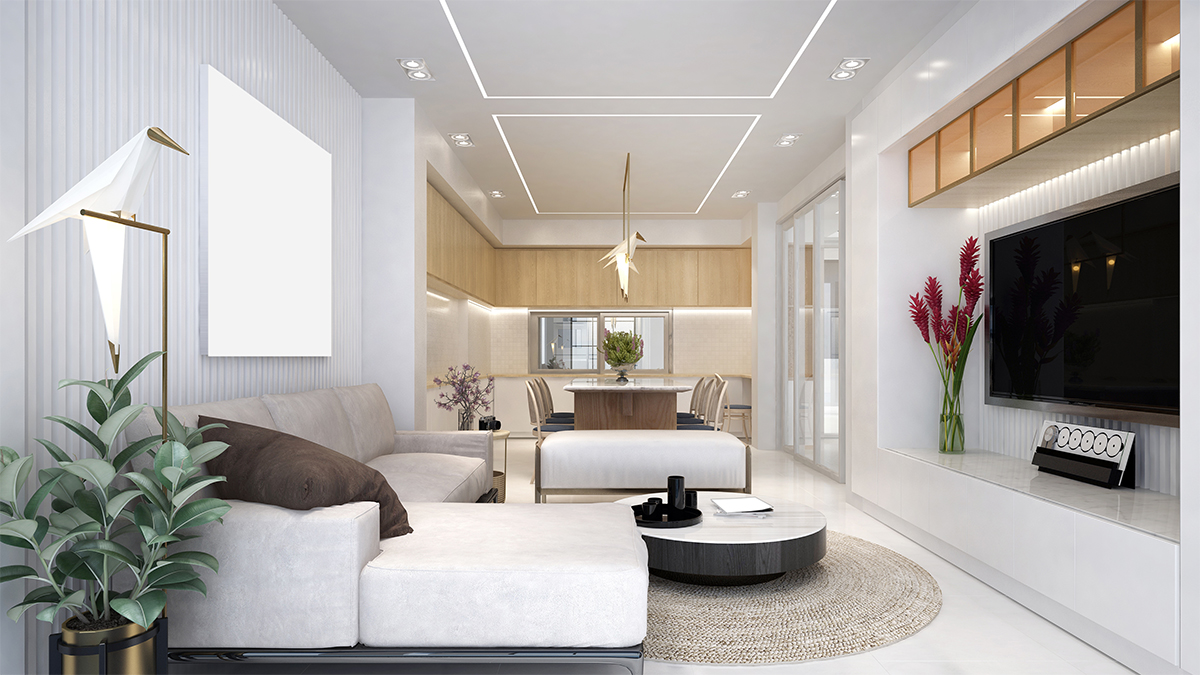
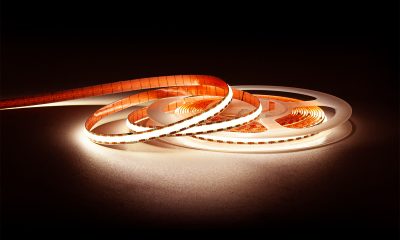
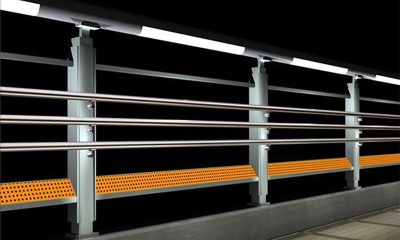
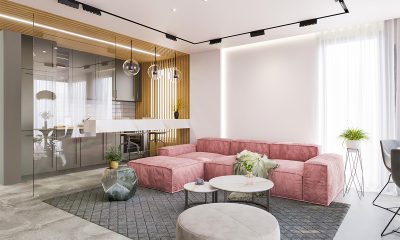
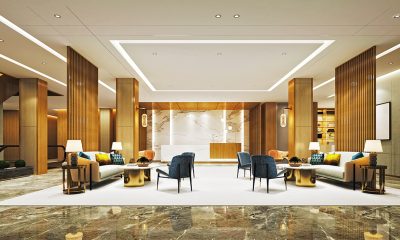



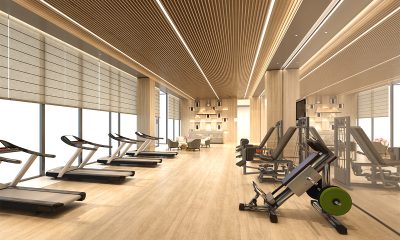
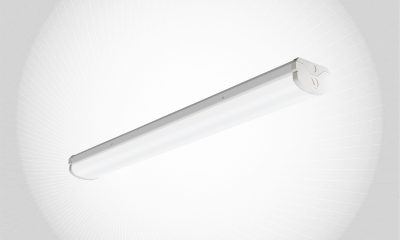
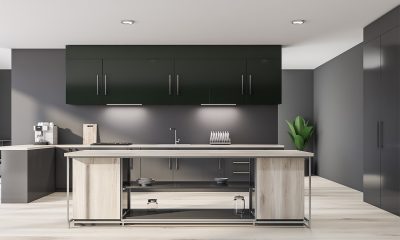
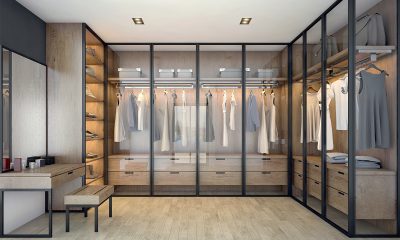
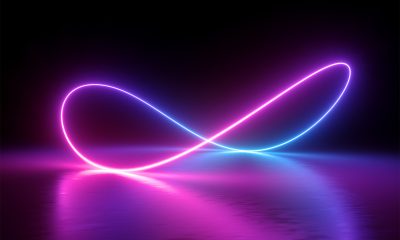





Loading...